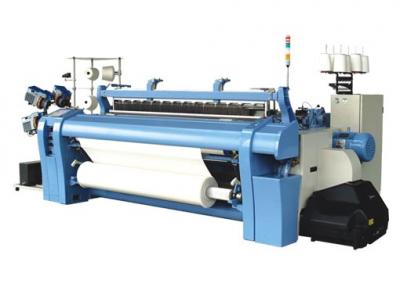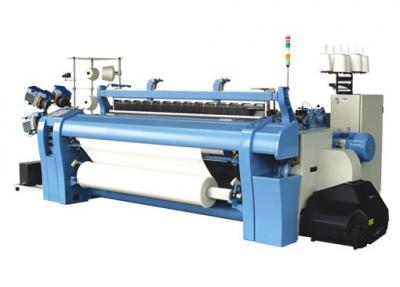Fabric differentiation:
Judging whether the fabric is a sword fabric or an air-jet fabric can be seen from the side structure of the fabric:
(1) Usually polyester and cotton yarn is rapier (edge-locking device) and filament is air-jet weaving (planetary gear device).
(2) Air-jet double-open fabric: one side of it is thread and the other side is filament. (In the middle is the edge-locking device, planetary gears on both sides of weft).
(3) Rapier double-open fabric: both sides of yarn are polyester-cotton yarn (both are edge-locking devices).
Loom differentiation:
Rapier loom: use rigid or flexible rapier head, bring clamp, guide weft yarn. Rapier loom is not only suitable for plain and veined fabrics, but also suitable for multi-color weft fabrics. It is also suitable for the production of dyed, double-layer velvet fabrics, terry fabrics and decorative fabrics.
Air jet loom textile machine: The weft is pulled by the jet compressed air, and the weft is carried through the shed. The main characteristics of air jet loom textile machine are fast speed and high labor productivity. It is suitable for plain and grain fabrics, fine and super high density fabrics and large batch fabrics.
Advantages and disadvantages of grey fabrics:
(1) There are many kinds of fine count yarns produced on air jet loom textile machines, and the main types are light and thin fabrics, while rapier looms have many kinds of Coarse Count yarns, and the main types are heavy and heavy fabrics.
(2) From the point of view of equipment, the weft insertion of jet and rapier is nothing more than different.
(3) Weaving the same fabric, the cost of raw materials is the same, weaving cost is lower, such as twill, jet speed can be up to 800 revolutions, rapier only 180-200 revolutions, jet blockers watch 10-12, and arrow rods up to 4-6.








 +86-575-86333303
+86-575-86333303  sales@wsftex.com
sales@wsftex.com
 Rifa Road, Nanyan High-tech Zone, Xinchang, Zhejiang, China
Rifa Road, Nanyan High-tech Zone, Xinchang, Zhejiang, China